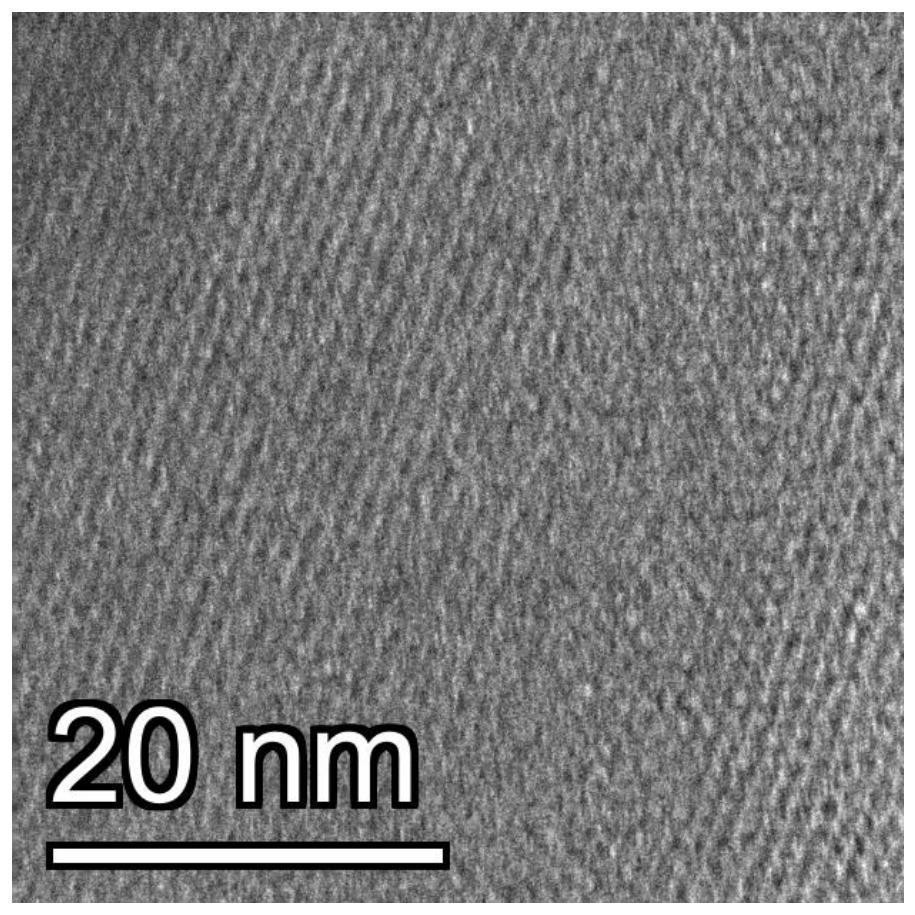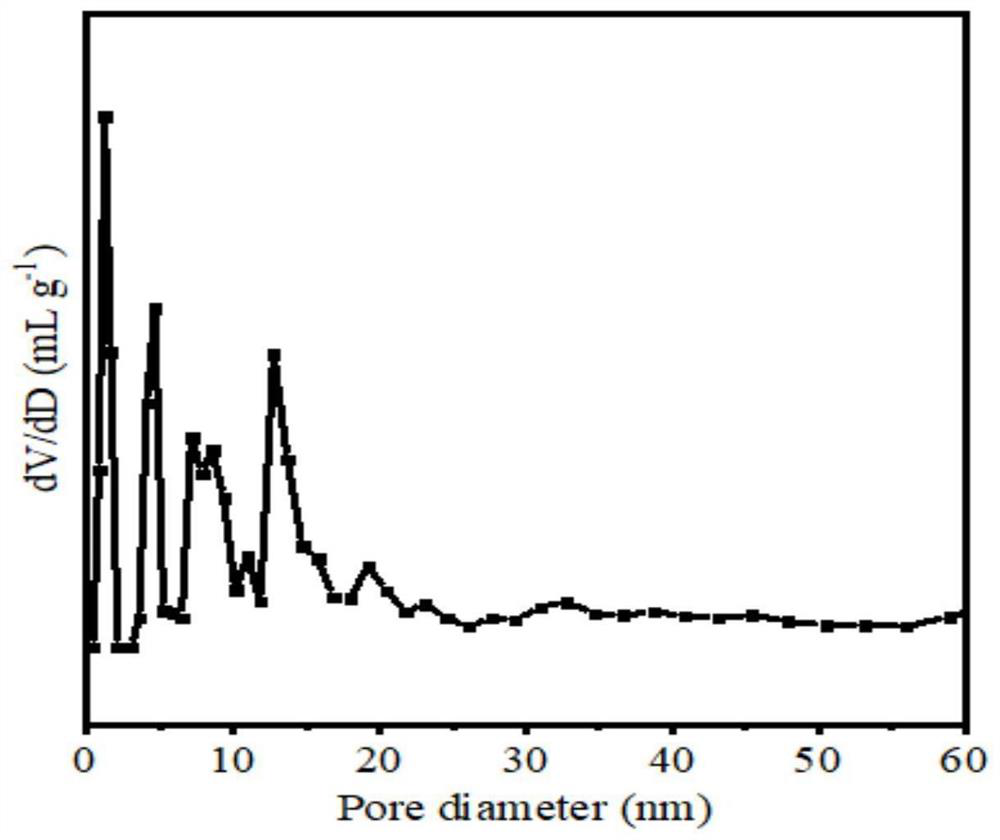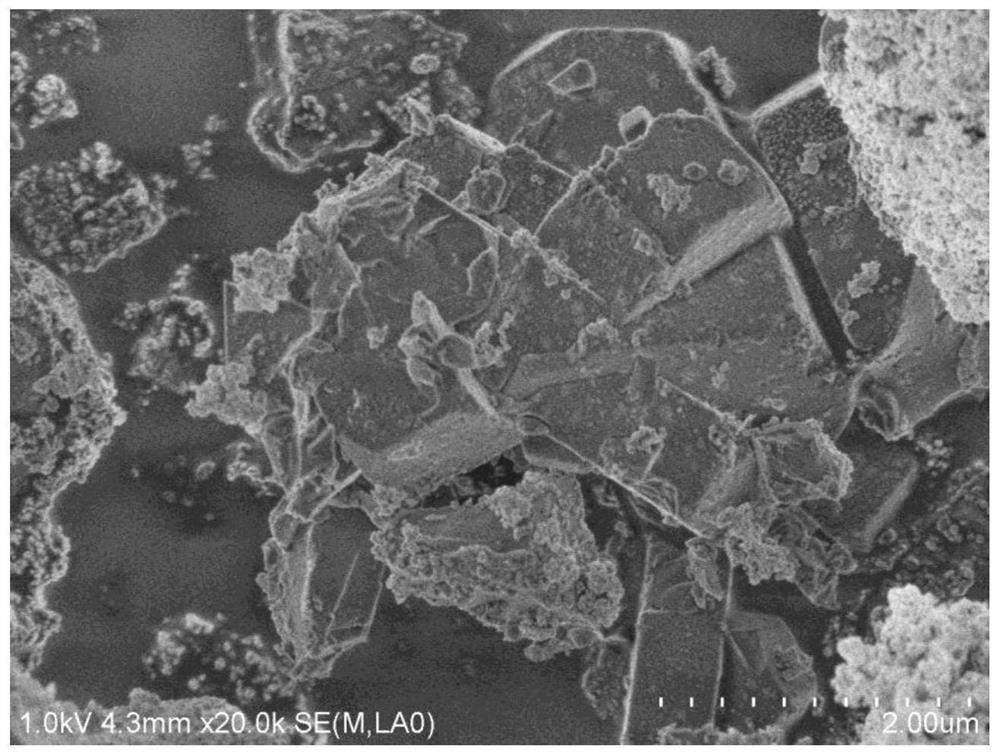Hierarchical pore molecular sieve packaged platinum-nickel bimetallic nano catalytic material as well as preparation method and application thereof
A bimetallic nano-catalytic material technology, applied in molecular sieve catalysts, chemical instruments and methods, physical/chemical process catalysts, etc., can solve the lack of effective regulation of bimetallic distribution position, the easy agglomeration and loss of bimetallic active centers, easy loss and loss of bimetallic active centers. problems such as agglomeration, to achieve high reactivity and selectivity, avoid sintering, and improve mass and heat transfer.
- Summary
- Abstract
- Description
- Claims
- Application Information
AI Technical Summary
Problems solved by technology
Method used
Image
Examples
Embodiment 1
[0025] At 25°C, add 1.2g of nano-silica and 50g of deionized water into the reactor, react at 80°C for 1h, add 15g, 2wt.% methanol solution of methacryloxysilane, and continue the reaction for 6h. Filter, wash the filter cake with 100g of ethanol, and dry at 70°C for 12h to obtain the modified silicon source;
[0026] At 25°C, add 1g of ethylenediamine and 15g of deionized water into the reactor, react at 30°C for 0.5h, add 0.1g of platinum acetate, 0.5g of basic nickel carbonate, and continue the reaction for 1h to obtain the PtNi bimetallic precursor body;
[0027] At 25°C, add 5g of modified silicon source, 3g of sodium metaaluminate, 4g of tetrapropylammonium hydroxide, 2g of NaOH, 0.2g of PtNi bimetallic precursor, and 100g of deionized water into the reactor, and react at 150°C for 3 days. After cooling down to room temperature, filter; wash the filter cake with deionized water until the pH of the washing liquid reaches 7, dry at 80°C for 12h, and then roast at 600°C fo...
Embodiment 2
[0033] At 25°C, add 1.5g of nano-silica and 50g of deionized water into the reactor, react at 70°C for 2h, add 18g, 2wt.% of 3-(2,3-glycidyloxy)propyltrimethoxy The methanol solution of base silane was continued to react for 8 hours, then filtered, and the filter cake was washed with 130 g of ethanol, and dried at 80°C for 12 hours to obtain a modified silicon source;
[0034] At 25°C, add 1.2g of diethylenetriamine and 18g of deionized water into the reactor, react at 50°C for 0.2h, add 0.1g of platinum acetate, 0.6g of hexaammine nickel chloride, and continue the reaction for 2h to obtain PtNi bimetallic precursor;
[0035] At 25°C, add 8g of modified silicon source, 1g of aluminum isopropoxide, 5g of tetrapropylammonium bromide, 1.5g of NaOH, 0.1g of PtNi bimetallic precursor, and 75g of deionized water into the reactor, and react at 140°C for 4d , after cooling down to room temperature, filter; wash the filter cake with deionized water until the pH of the washing liquid r...
Embodiment 3
[0038] At 25°C, add 2g of nano-silica and 60g of deionized water into the reactor, react at 90°C for 0.5h, add 25g, 3wt.% of 3-(2,3-epoxypropoxy)propyltrimethoxy The methanol solution of base silane was continued to react for 10 hours, then filtered, and the filter cake was washed with 200 g of ethanol, and dried at 60°C for 24 hours to obtain a modified silicon source;
[0039] At 25°C, add 0.8g of ethylenediamine and 20g of deionized water into the reactor, react at 30°C for 0.5h, add 0.15g of potassium chloroplatinate, 1g of basic nickel carbonate, and continue the reaction for 0.5h to obtain PtNi Bimetallic precursors;
[0040] At 25°C, add 15g of modified silicon source, 2g of sodium metaaluminate, 6g of tetrapropylammonium hydroxide, 1.5g of NaOH, 0.15g of PtNi bimetallic precursor, and 80g of deionized water into the reactor, and react at 170°C for 3d , filter after cooling down to room temperature; wash the filter cake with deionized water until the pH of the washing ...
PUM
 Login to View More
Login to View More Abstract
Description
Claims
Application Information
 Login to View More
Login to View More - R&D
- Intellectual Property
- Life Sciences
- Materials
- Tech Scout
- Unparalleled Data Quality
- Higher Quality Content
- 60% Fewer Hallucinations
Browse by: Latest US Patents, China's latest patents, Technical Efficacy Thesaurus, Application Domain, Technology Topic, Popular Technical Reports.
© 2025 PatSnap. All rights reserved.Legal|Privacy policy|Modern Slavery Act Transparency Statement|Sitemap|About US| Contact US: help@patsnap.com



